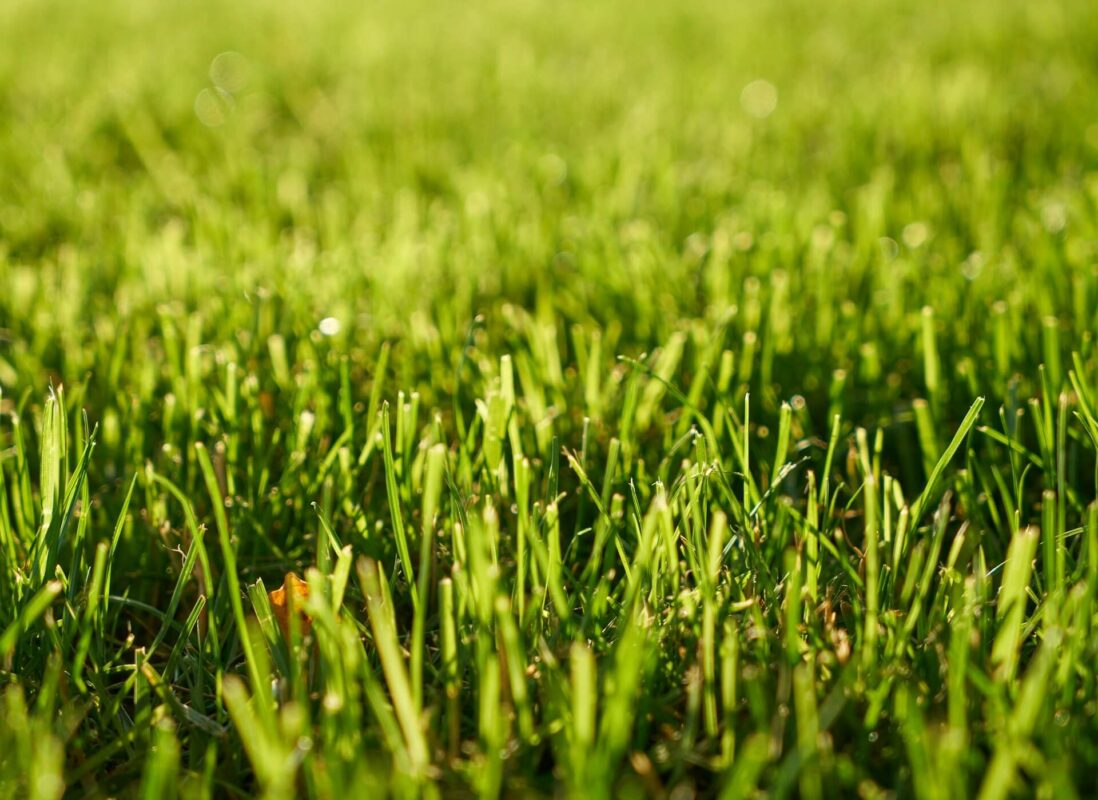Kentucky Bluegrass Lawn Recovery

The heat of summer hit us hard, but now things are cooling down. Some of us have lawn that is brown and dead looking. Some of it is from neglect and some from poor rains or irrigation systems that could not meet the demands of summertime bluegrass watering. Most of the brown is in large or small patches, but some is flecked with green clumps of bluegrass here and there. During this time of year I often get questions about reseeding or re-sodding the grass. My answer is always, “Don’t bother.”
How Bluegrass Copes with Heat & Drought
Despite its deserved reputation as one of the most thirsty turfgrasses, bluegrass has a trick up its sleeve that makes it a great turf for hot dry summers. Well, sort of. Bluegrass always struggles through heat and drought, but that is because it is a cool season grass. That means it doesn’t grow well in heat. This gives bluegrass the advantage in that it does not need much water in the summer. I said there is a trick, and that is that it turns brown like I described earlier. But as awful as that sounds, as the weather cools and it gets easier to keep moisture in the soil, the bluegrass will put out nice green shoots.
Fall is a Great Time For Bluegrass Recovery
Now, I guess I should clarify. Most of the turfgrass-loving world does not like a brown lawn at anytime of the season. If you have an intentional brown lawn your neighbors are going to be a little annoyed at you and you might expect a visit from the HOA or your city inspector. But, if your lawn is brown because you couldn’t help it, it is not lost! It just needs a little more water to start growing again. Now that people are watering less it should be easier to get the pressure to cover the areas you may have struggled with all summer. So if your lawn is brown, go ahead and keep the water coming. Not too much, or you will have damage from overwatering.
Aeration Aids Recovery
A yearly browning in the summer will not destroy your bluegrass, but it will tend to make it go uneven and lumpy. If you give it the care and attention needed it will go a long way towards keeping a level and healthy lawn. This care should also include an autumn aeration. This can be done as soon as the grass starts re-growing in the cool weather but before the bluegrass goes semi-dormant for winter.
Adding Organic Material
Another strategy for recovering a drought stressed lawn is to give it a layer of compost or peat. The organic material will work as many wonders for your lawn as it does for a flowerbed or vegetable garden. In particular, it will help keep the roots cool for the next summer heatwave. Again, don’t go too heavy. You don’t want to choke out the grass, just give it a little protection and soil. A quarter inch should be all you want to put on at one time.
Good luck in getting your lawn back to peak condition, I expect great things for it next summer!
Manana!

